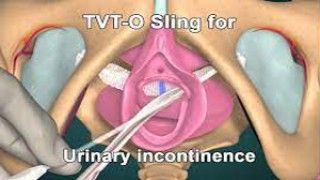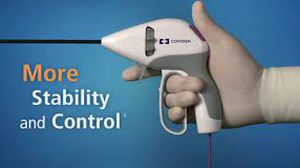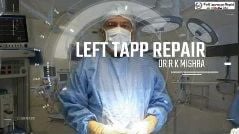Laparoscopic Bilateral Inguinal Hernia Repair Offers Minimally Invasive Solution
Add to
Share
1,056 views
Report
2 years ago
Description
Introduction: Inguinal hernias are a common condition characterized by the protrusion of abdominal tissues through the inguinal canal. Bilateral inguinal hernias, affecting both sides of the groin, present a unique challenge for patients and surgeons alike. Traditionally, open surgery was the standard treatment for bilateral inguinal hernias. However, with the advent of laparoscopic techniques, a minimally invasive solution has emerged as a preferred option for repairing these hernias. This essay explores the advantages and effectiveness of laparoscopic bilateral inguinal hernia repair, highlighting its role in providing a minimally invasive solution and doubling the relief for patients. Understanding Bilateral Inguinal Hernias: Bilateral inguinal hernias occur when hernias develop on both sides of the groin simultaneously. This condition can cause significant discomfort, pain, and limitations in daily activities. It requires surgical intervention to repair the hernias and alleviate the symptoms. The Advent of Laparoscopic Bilateral Inguinal Hernia Repair: Laparoscopic surgery has revolutionized the field of hernia repair by offering a minimally invasive alternative to traditional open surgery. With laparoscopic bilateral inguinal hernia repair, small keyhole incisions are made in the abdomen through which a laparoscope and specialized instruments are inserted. This allows surgeons to visualize the hernias and surrounding structures with precision and perform repairs effectively. Advantages of Laparoscopic Bilateral Inguinal Hernia Repair: Minimally invasive approach: The primary advantage of laparoscopic bilateral inguinal hernia repair is its minimally invasive nature. The smaller incisions result in reduced trauma to the surrounding tissues, leading to less pain, minimal scarring, and faster recovery compared to open surgery. Simultaneous repair: Laparoscopic techniques allow surgeons to repair both inguinal hernias simultaneously. This not only saves time but also provides symmetrical relief to the patient, reducing the risk of developing hernias on the opposite side later. Enhanced visualization and precision: The laparoscope provides high-definition imaging, enabling surgeons to visualize the hernias and surrounding anatomy with clarity. This enhances their ability to accurately identify and repair the hernias, resulting in improved outcomes. Reduced risk of complications: Laparoscopic bilateral inguinal hernia repair reduces the risk of complications such as wound infections, hernia recurrence, and chronic pain compared to open surgery. The smaller incisions also minimize the likelihood of postoperative complications and allow for a faster recovery. Quicker recovery and shorter hospital stays: Patients who undergo laparoscopic bilateral inguinal hernia repair experience faster recovery times and shorter hospital stays. This enables them to return to their daily activities sooner and enhances their overall quality of life. Laparoscopic bilateral inguinal hernia repair has transformed the treatment approach for individuals suffering from hernias on both sides of the groin. Unlike traditional open surgery, this minimally invasive technique offers a highly effective solution with numerous advantages. By making small incisions in the abdomen, surgeons can insert a laparoscope and specialized instruments to repair the hernias precisely. The benefits of laparoscopic bilateral inguinal hernia repair are significant. Patients experience less pain, minimal scarring, and faster recovery times compared to open surgery. Simultaneous repair of both hernias not only saves time but also provides balanced relief to patients, reducing the likelihood of future hernias on the opposite side. The laparoscope provides enhanced visualization, allowing surgeons to accurately identify and repair the hernias, resulting in improved outcomes. Moreover, this minimally invasive approach reduces the risk of complications such as wound infections, hernia recurrence, and chronic pain. It also enables patients to recover more quickly, allowing them to resume their daily activities sooner and improving their overall quality of life. In summary, laparoscopic bilateral inguinal hernia repair offers an effective and minimally invasive solution for individuals with hernias on both sides of the groin. The advantages it provides, including reduced pain, minimal scarring, faster recovery, simultaneous repair, and reduced risk of complications, make it an appealing option for patients and surgeons alike. With its ability to provide double the relief, this technique continues to play a pivotal role in improving the lives of individuals affected by bilateral inguinal hernias. Conclusion: Laparoscopic bilateral inguinal hernia repair offers a highly effective and minimally invasive solution for patients with bilateral inguinal hernias. The advantages it provides, including reduced trauma, simultaneous repair, enhanced visualization, reduced risk of complications, and quicker recovery, make it a preferred choice for patients and surgeons. As the field of surgical techniques continues to advance, laparoscopic bilateral inguinal hernia repair will continue to play a significant role in providing double the relief for patients, enabling them to regain their normal lives with minimal disruption and discomfort.
Similar Videos






